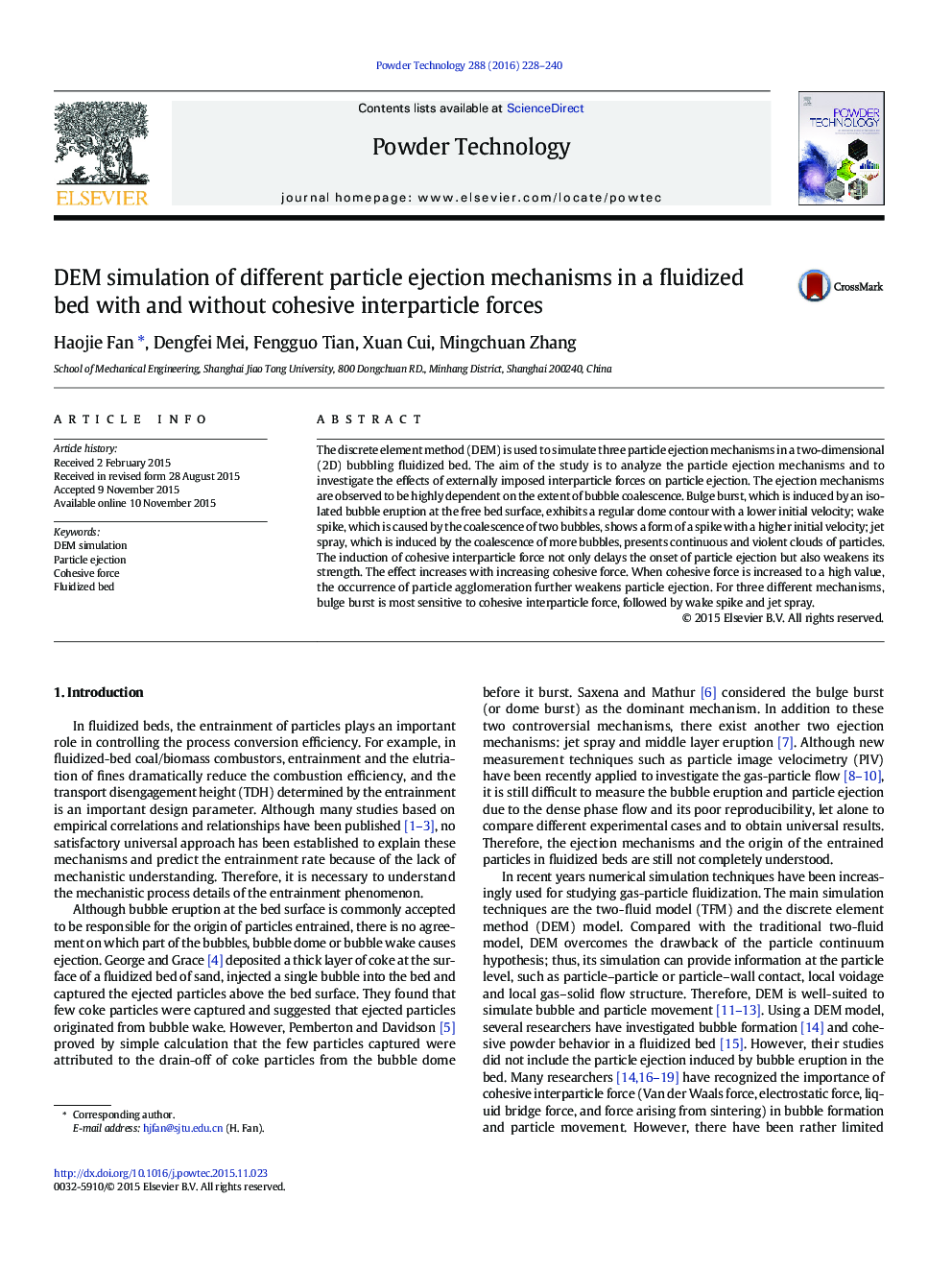| کد مقاله | کد نشریه | سال انتشار | مقاله انگلیسی | نسخه تمام متن |
|---|---|---|---|---|
| 235502 | 465637 | 2016 | 13 صفحه PDF | دانلود رایگان |

• DEM is used to simulate three particle ejection mechanisms in a 2D fluidized bed.
• The ejection mechanisms are highly dependent on the extent of bubble coalescence.
• The induction of cohesive force affects the onset of particle ejection and its strength.
• The order of sensitivity to cohesive force is bulge burst > wake spike > jet spray.
The discrete element method (DEM) is used to simulate three particle ejection mechanisms in a two-dimensional (2D) bubbling fluidized bed. The aim of the study is to analyze the particle ejection mechanisms and to investigate the effects of externally imposed interparticle forces on particle ejection. The ejection mechanisms are observed to be highly dependent on the extent of bubble coalescence. Bulge burst, which is induced by an isolated bubble eruption at the free bed surface, exhibits a regular dome contour with a lower initial velocity; wake spike, which is caused by the coalescence of two bubbles, shows a form of a spike with a higher initial velocity; jet spray, which is induced by the coalescence of more bubbles, presents continuous and violent clouds of particles. The induction of cohesive interparticle force not only delays the onset of particle ejection but also weakens its strength. The effect increases with increasing cohesive force. When cohesive force is increased to a high value, the occurrence of particle agglomeration further weakens particle ejection. For three different mechanisms, bulge burst is most sensitive to cohesive interparticle force, followed by wake spike and jet spray.
Figure optionsDownload as PowerPoint slide
Journal: Powder Technology - Volume 288, January 2016, Pages 228–240